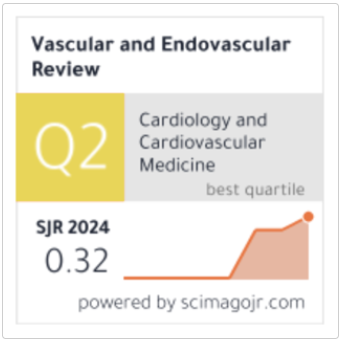Assessing One-Year Outcomes of EECP Therapy on Exercise Capacity in Patients with Chronic Coronary Syndrome underwent coronary angiography
Keywords:
EECP, Angina, percutaneous coronary interventions, Angiography.Abstract
Background: Enhanced External Counter pulsation (EECP) is an emerging non-invasive treatment that involves the rhythmic inflation of external cuffs positioned around the lower limbs, synchronized with the cardiac cycle. This therapy is mainly utilized for managing refractory angina—defined as persistent chest pain lasting at least three months—in patients who do not show improvement with guideline-directed medical treatments, surgical procedures, or percutaneous coronary interventions. There is limited data assessing the efficacy of EECP in individuals suffering from chronic coronary artery disease. This study aims to evaluate the impact of EECP on enhancing quality of life in patients with stable chronic coronary artery disease.
Methods: The current analysis experienced 106 individuals, who were either universal for drug therapy, inappropriate to surgical options, or passed through the Peruxyus Coronary Intervention (PCI) without reducing the symptoms. Participants were admitted to the Al-Nazaf Heart Center and several private clinics between January 2018 and December 2019. All subjects had to undergo coronary angiography; Those diagnosed with severe three-toot diseases (defined as more than 70% stenosis in each artery) were included in the study. Prior to initiating EECP treatment, the symptoms of the patient and echocardiographic parameters were evaluated and then observed over a period of 12 months.
Results: Data on 106 people (20 women and 86 men) were reviewed by 45 to 80 years (average age: 61) 8.2), over a period of 12 months follows. Most participants extracted on average 28 EECP sessions (SD) 7), producing a total response rate of 88.7% depending on the symptom cuts characterized by the Canadian Cardiovascular Society (CCS). Patients who received PCI and those who only received medical therapy after angiography were not quite different in the EECP response rates (p = 0.82). Furthermore, there was no statistically significant correlation between the type of procedure performed and changes in echocardiographic parameters post-EECP treatment (P = 0.30). The findings indicated that male patients exhibited a more favorable response to EECP compared to female patients (p=0.001). Additionally, factors such as smoking history, hypertension, and diabetes did not significantly affect responses to EECP treatment (p = 0.54, p = 0.22, and p = 0.10 respectively).
Conclusion EECP is an effective therapy for selected patients suffering from refractory angina that does not respond enough to traditional medical treatment or surgical procedures.








